Like so many other astronomers, I am now starting on a project to upgrade my observatory to allow full unattended imaging. My definition of ‘unattended’ is that I will be at home but potentially inside the house. Although this project would give the capability of full robotic operation, I’m not sure if that is one of my current goals..
So, I would like to be able to:
- Power up the observatory and peripherals
- Open the roof
- Select the imaging target
- Go
The system will:
- Acquire the target
- Acquire and calibrate a guide star
- Auto-meridian flip
- Plate solve
- And in case of poor weather, either pause (in the case of clouds) or shut down (in the case of rain)
All good projects need clear deliverables, so I need to formalise these in detail. The good thing is that I think I have all the software needed, and I know the main components needed to be able to switch on the observatory.
I’m going to give a big shout out to Steve Richards of The Chanctonbury Observatory at this point. He has recently completed a similar project – hence the inspiration – with his dome, and he has been very kind to share his experiences and learnings.
Implementation
The project will be split into three phases – this will allow me to keep track of all the activities needed in a logical order, and partly due to cost. The phases are:
Phase 1 – Software
This phase will ensure that all of the software components are configured and communicate correctly. It is likely that the observatory PC will be wiped and re-installed from scratch and then all software freshly installed. This will be the laborious part! Once complete, this phase will enable me to remotely control the imaging session from inside the house.
- Set up remote PC control with Wake on Lan (WOL) configured
- Ensure image orchestration is configured and tested
- Ensure plate solving is configured and tested, and failover blind solving
- Ensure auto-focus is configured and tested
- Ensure filter focus off-sets are measured and recorded
- Measure flats timings for each filter and record
- Build darks/defect library for guiding exposures from 0.5s to 5s in 0.5s increments
- Create start-up/shut-down batch scripts for:
- EQMOD
- AAG Cloudwatcher
- Planetarium
- Controlling Software
- Guiding and Image Acquisition
Phase 2 – Power
This phase is concerned with remotely controlling the power for the various components. This is likely to be controlled via a Velleman VM110N and VM129, coupled with the LesveDome ASCOM driver software (this seems to the most common one outside of the more expensive ACP route). There is no roof power at this stage of the project – this will be in Phase 3
So, I will build control circuits to remotely power:
- 12v Power Supply
- Mount power
- Camera power
- Dew control power
- AAG Cloudwatcher Power
Phase 3 – Roof
The roof on the observatory needs some work before I can think about remote operation. While the current construction is fine for pushing by hand, it is too much effort for 12v motors. So, this will need some careful thought – potentially a new light-weight roof, but as this is likely to be well into 2017, it gives me time to explore options.
